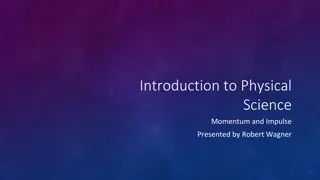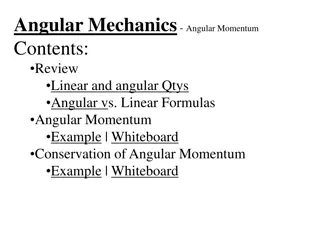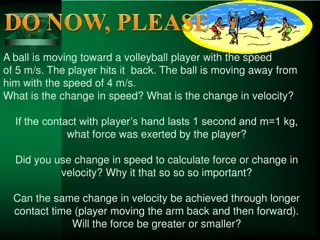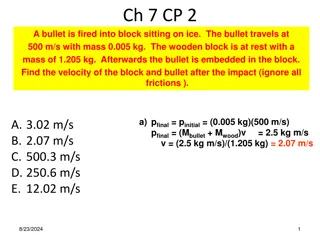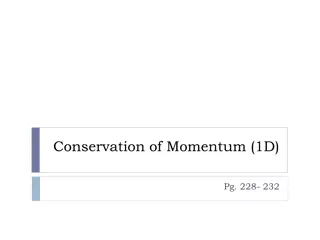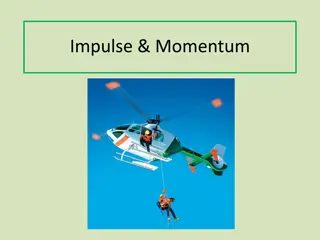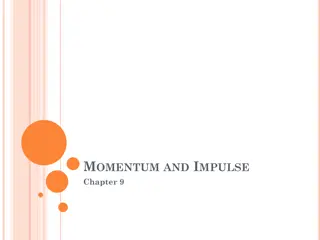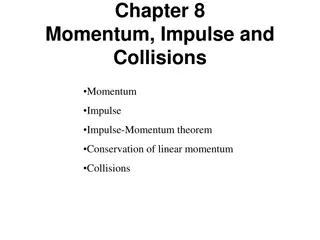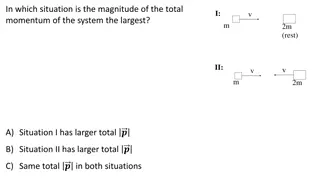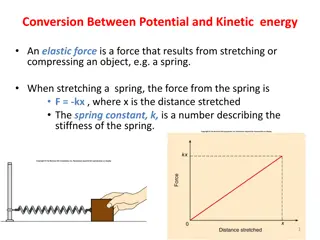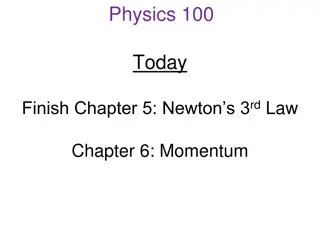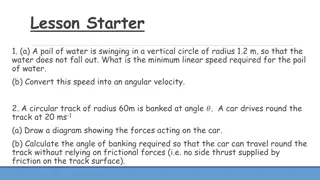
Understanding Momentum and Collision Physics
Explore the concept of momentum in physics, why it makes objects hard to stop, and how it relates to collisions and explosions. Learn about the conservation of momentum and the application of Newton's laws in understanding the behavior of interacting bodies.
Download Presentation

Please find below an Image/Link to download the presentation.
The content on the website is provided AS IS for your information and personal use only. It may not be sold, licensed, or shared on other websites without obtaining consent from the author. If you encounter any issues during the download, it is possible that the publisher has removed the file from their server.
You are allowed to download the files provided on this website for personal or commercial use, subject to the condition that they are used lawfully. All files are the property of their respective owners.
The content on the website is provided AS IS for your information and personal use only. It may not be sold, licensed, or shared on other websites without obtaining consent from the author.
E N D
Presentation Transcript
What makes an object hard to stop? Is it harder to stop a bullet, or a truck travelling along the highway? What makes each object hard to stop?
Momentum when thinking about "unstoppability also useful when considering collisions and explosions. It is defined as Momentum is a useful quantity to consider unstoppability". It is Momentum (kg.m.s Momentum (kg.m.s- -1 1) = Mass (kg) x Velocity (m.s p = ) = Mass (kg) x Velocity (m.s- -1 1) ) p = mv mv
A truck has a mass of 10 000 kg and a velocity of 3 m.s-1. What is its momentum? Momentum = Mass x velocity = 10 000 x 3 = 30 000 kg.m.s-1.
The momentum p of a body of constant mass m moving with velocity v is, by definition mv p = mv It is a vector quantity Its units are kg m s-1or Ns It is the property of a moving body.
1. In a collision between two objects, momentum is conserved (total momentum stays the same) 2. In an isolated system (no outside forces), momentum remains constant isolated system = translational equilibrium We can use this to calculate what happens after a collision (and in fact during an explosion ). Momentum is not energy! Momentum is not energy!
To derive this law we apply Newtons 2nd law to each body and Newton s 3rdlaw to the system i.e. Imagine 2 bodies A and B interacting mass of mAand mB A has a velocity change of uAto vAand B has a velocity change of uBto vBduring the time of the interaction t
Then the force on A given by Newton 2 is FA= mAvA mAuA t And the force on B is FB= mBvB mBuB t But Newton 3 says that these 2 forces are equal in magnitude and opposite in direction
Therefore mAvA mAuA= - (mBvB mBuB) t mAvA mAuA= mBuB mBvB t Rearranging gives: mAuA+ mBuB= mAvA+ mBvB Total Momentum before = Total Momentum after
Momentum is a vector, so if velocities are in opposite directions we must take this into account in our calculations
F = ma F = m v - m u t t F = mv mu F = p t t The rate of change of momentum of a body is proportional to the resultant force and occurs in the direction of the force.
Where have you heard this term? Some Examples: I bought that from the internet on impulse after seeing the commercial on TV I got into a fight on impulse a name on impulse on impulse after being called
F = p F = mv mu t t Ft = mv mu = p This quantity Ft is called the impulse force on the body impulse of the It is a vector quantity Its units are kg m s-1or Ns
Ft = Ft = mv mv mu mu = p p The quantity Ft Ft is called the impulse impulse, and mv mv mu mu is the change in momentum (v = final velocity and u = initial velocity) Impulse = Change in momentum Impulse = Change in momentum
Impulse is measured in N.s (Ft) or [kg.m.s-2]x[s] = [kg.m.s-1] (mv mu) Tiger%2520Woods%2520PGA%2520TOUR%25202006%2520-%2520Pebble%2520Beach%252018%2520-%2520Xbox%2520360
Note: For a ball (mass m) bouncing off a wall, don t forget the initial and final velocity are in different directions, so you will have to make one of them negative. In this case mv mu = 5m (-3m) = 8m 5 m/s -3 m/s
A tennis ball (0.3 kg) hits a racquet at 3 m/s and rebounds in the opposite direction at 6 m/s. What impulse is given to the ball?
A tennis ball (0.3 kg) hits a racquet at 3 m/s and rebounds in the opposite direction at 6 m/s. What impulse is given to the ball? 3 m/s -6 m/s
A tennis ball (0.3 kg) hits a racquet at 3 m/s and rebounds in the opposite direction at 6 m/s. What impulse is given to the ball? Impulse = mv mu = = 0.3x-6 0.3x3 = -2.7kg.m.s-1 3 m/s -6 m/s

